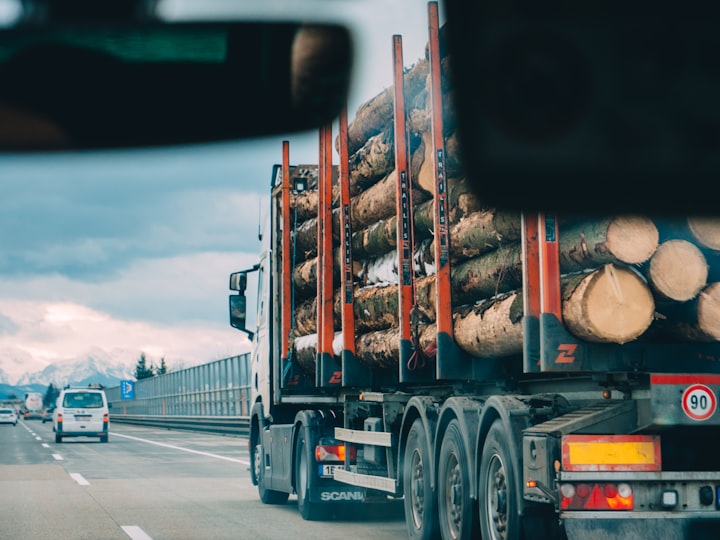How to Stay Safe When Driving HGVs in Winter
When driving HGVs in winter, regular safety precautions take on a whole new level of importance.

When driving HGVs in winter, regular safety precautions take on a whole new level of importance. They may also need to be adapted to suit the changed conditions. With that in mind, Andrea Easton, Head of Finance and Operations at Walker Movements, shares her insight for how to stay safe when driving HGVs in winter.
Start with self-care
Winter is challenging for both the body and the mind. The more you can do to protect your body, the easier you’ll find it to look after your mind. Make sure that you can keep yourself warm in your cab both while driving and when you sleep.
In the daytime, use thermal leggings and vests plus extra socks (preferably thermal). These trap a lot of your body heat without adding much bulk. You might also want to add a woolly hat (perhaps with earflaps) and gloves (possibly fingerless). Expect to have more of an appetite than usual and to want hot drinks rather than cold ones.
If you are sleeping in your cab, use a proper four-season sleeping bag and consider a bivvy bag on top. Bring these with you even if you have accommodation booked, just in case. You might want to bring an extra blanket in case your accommodation doesn’t provide enough. A kevlar (survival) blanket takes up virtually no space and can literally be a lifesaver.
Keep your vehicle in good shape
When you do your regular checks, pay special attention to the following.
- Tyres – pressure, wear and balance
- Battery
- Windscreen wipers and defrosters
- Fluid levels
- Lights
- Exhaust
Ideally, check your tyres whenever you have the opportunity. Tyre pressure drops very quickly in cold conditions.
Bring a winter-safety kit
Hopefully, you already have a general safety kit for your vehicle. If not, you should make it a priority to put one together. This should always include:
· Jump leads
· A torch
· A mobile phone battery pack
· A high-visibility jacket
· A paper map
· At least half a tank of fuel
· Extra food and water
You should then add:
· A shovel (if possible a snow shovel) and a bag of sand (salt will work but is bad for the environment).
· De-icer and ice scraper
· Extra warm clothes
You might also want to consider adding snow chains.
Keep your sunglasses and sun-protection from summer. This may seem counterintuitive. In actual fact, the sun can actually be more of a problem in winter than it is in summer. It rises late and sets early. This means that it will be low in the sky quite a bit of the time. In other words, it can glare straight into your eyes. It can also be strong enough to burn.
Allow plenty of time for your journey
Add an allowance of at least 20% onto your standard journey time. If the weather is particularly bad, allow even more extra time. Then be prepared for your trip to take longer than that.
Remember, in addition to all the standard hazards of winter, you need to be prepared for infrastructure issues. In other words, cold weather can damage roads and other infrastructure. This can create delays.
Sadly, you also need to expect there to be more accidents than usual. Not all drivers are as careful as they should be. What’s more, even drivers who try to be careful can be caught out by inexperience (or sheer bad luck).
Plan your routes carefully
HGVs generally do best on motorways and major roads. You want to stick to these as much as you possibly can in winter. They tend to be the best-maintained roads (e.g. with minimal to no potholes). They also tend to be gritted fairly promptly.
Before you come off a main road, do a double check of the motoring news. Find out if there are any known hazards you need to be aware of. If there are, your first-choice option should usually be to take an alternative route.
If this is not possible, then you need to decide whether or not you’re sure you can handle the hazard safely. If you have any doubts about this, then find a place to pull up and contact your base. Having to rearrange a delivery is far less of an inconvenience than having to deal with the consequences of an accident.
Refuel as often as you can
You’re almost certainly going to burn through fuel in winter much more quickly than you do in summer. Firstly, your vehicle will have to work a lot harder to deal with the conditions. Secondly, you’re more likely to find yourself forced to take detours, possibly lengthy ones.
Using your reserve fuel should be your option of last resort, not your go-to option. Keep your fuel tank as full as you can. If you do need to use your emergency fuel, replace it as quickly as possible.
Drive carefully
This is simple in theory but putting it into practice can be challenging. Part of the challenge is the fact that it requires you to stay highly focused on the road. This is why self-care is so important.
Go slowly and gently
This is the key to driving safely in winter (even more than at other times of the year). You want to keep a steady speed. If you need to slow down (further), then you should be lifting off the accelerator rather than hitting the brakes. Forget about matching other drivers and overtaking. In particular, do not overtake snow ploughs and gritters.
Remember, everything is going to take longer, including, and especially, braking distances. That means you should allow extra space between your vehicle and the vehicle in front.
You also need to allow longer for lane changes and turns. Indicate both well in advance. In general, you want to allow at least four or five blinks before you make your move. Remember, other drivers may not be as focused as you. Give them time to notice your signal.
Use your lights appropriately
Visibility plummets in winter so be prepared to use your headlights a lot. Generally, you should dip them out of consideration to other road users. Never be afraid to use your hazard lights if you feel it’s justified. It’s better to err on the side of caution, especially in winter.
Keep your brakes as dry as you can
Winter is often very wet. This will reduce your brakes’ functionality. If you get dry spells, apply your brakes gently at a very low speed. This will create friction and hence heat and will help to dry them.
Pay attention to your steering wheel
If your steering feels lighter than it should there is a strong chance you are driving on ice.
About the Creator
Andrea Easton
Andrea Easton is the Head of Finance and Operations of Walker Movements, who are specialists in quality second-hand, used trucks and trailers and are global leaders in the trucking industry.






Comments
There are no comments for this story
Be the first to respond and start the conversation.